Graphical adventure games don't have much of a history or an audience on consoles. But on the PC, they've long been a standard. Even if you don't play these types of games often, though, chances are you've heard of Myst, the 1993 adventure game that revolutionized the genre with its artistic visuals, compelling story, and clean, simple design. The latest in the series continues the traditions that started more than 10 years ago. Like its predecessors, Myst IV Revelation is a deliberately paced first-person-perspective adventure game whose controls are almost instantly intuitive. And yet its incredibly complex and challenging puzzles are about as far from instantly intuitive as possible. When it was originally released last year for the PC, Myst IV lived up to its subtitle thanks to a mesmerizing presentation. But neither the beautiful sights nor the simple controls withstood the translation to the Xbox without incident. Myst IV still offers a one-of-a-kind experience for the Xbox, and it's available at a budget price, for good measure. But you'd be better off playing the PC original if you have the means.
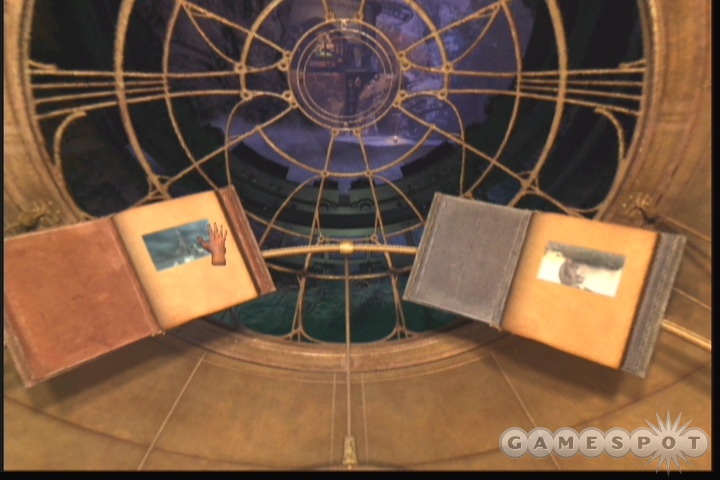
Before we get into more specifics about the game, for those who don't know, it's important to note that differences between the PC and Xbox versions are fairly subtle. However, they do have a significant impact nonetheless. The actual content of the two versions is the same. However, the game's stunning scenery is neither as sharp nor as colorful on the Xbox as on the PC, and the loading times between areas are just long enough to be aggravating. The occasional fits of slowdown you'll see as you look around in each environment are particularly unsightly, but the real problem with the downgrade in visual fidelity is that it makes it harder to spot essential elements onscreen. You need a keen eye to spot some of the details that are crucial to making progress in Myst IV, and though this task is already very difficult in the PC version, it's even harder on the Xbox. The game's 480p support clears things up a bit, but it doesn't make a dramatic difference.
What's more, the PC version's simple mouse-driven interface doesn't translate well to the Xbox, where you need to use the left thumbstick to move your perspective and your viewpoint around. By default, this motion is very sluggish, and while you can adjust the speed, you can't adjust the acceleration, which is slow. Consequently, it's kind of a pain to perform actions that are supposed to be trivial, like throwing a switch or pushing a couple of buttons. These distinctions between the PC and Xbox versions are enough to make the PC version much better overall, and they prevent the Xbox version from being a great game on its own merits. It's not hard to tell this was originally a PC game that was forced to accommodate a console-style control scheme.
Though your familiarity with previous Myst games is not necessarily assumed by Myst IV Revelation, its storyline is heavily intertwined with previous entries in the series. Longtime Myst fans will catch numerous references to earlier games, and they will most appreciate the ability to gain a lot of new insight into Myst's main characters, including the Da Vincian scientist Atrus and his scheming sons, Sirrus and Achenar.

Even if you aren't already familiar with these characters, there's a good chance they'll readily endear themselves to you, thanks to the game's use of live actors in its full-motion video plot sequences. The actors portraying these characters do a particularly fine job (some of the other performances aren't quite as strong, but they're OK), and they help give Myst IV a personal touch and a surprisingly distinctive personality, seeing as very few games feature live actors anymore. At any rate, though the story loosely ties together the events of Myst IV, it's mostly just there as a setup for you to explore a series of wondrous, otherworldly locales. If you've played a Myst game before, then you know not to expect a lot of dialogue or character interaction here. At the least, you can look forward to discovering and reading through the various main characters' journals during the course of the game, in addition to discovering their ambitions and secrets, along with some important clues. These journals are lengthy, but they're expressively narrated and packed with interesting detail.
As in previous Myst games, your character's persona is undefined, but it's evident that whoever it is you are, you're Atrus' friend, and you're willing to help him. After all, Atrus is a remarkable individual who has the power to write "ages," which take the form of completely different worlds that seem to spring forth from Atrus' books (he humbly explains that he merely links to these ages rather than creates them). Your journey through Myst IV will see you through several unique ages: Tomahna, a beautiful cove in which Atrus and his remaining family reside; Spire, a gloomy and equal parts bizarre and awe-inspiring world of floating cliffs and perpetual storms; Haven, a lush prehistoric-looking land filled with strange creatures; and Serenia, a utopian society that's reminiscent of the legend of the lost city of Atlantis. Each of the game's settings is well designed. The different ages are highly distinct from one another, not only in terms of the sights and sounds you'll experience while there, but also in the nature of the puzzles you'll be solving in the respective environments.
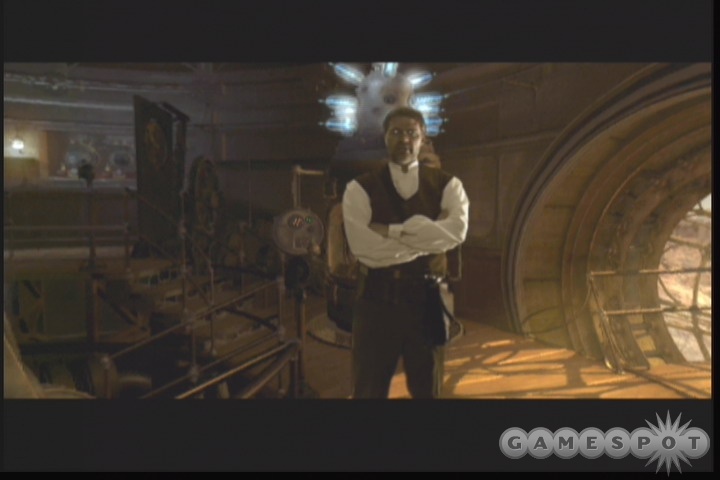
Unlike many other adventure games, Myst IV lets you go about some of your objectives, as well as visit some of the different ages, in no particular order. This free-form structure is both liberating and bewildering. Myst IV doesn't ever lead you by the nose from one location to another. It instead invites you (and challenges you) to find your own path. Navigating is simple enough. A context-sensitive cursor in the shape of a hand (you can even choose a right- or left-handed one) changes to indicate when you can move toward a distant area, examine an object, or use an object.
It's important to note that Myst IV is not a fully 3D game, which means you'll be moving from node to node--from one picturesque scene to another. Transitions from node to node are occasionally animated, but mostly, Myst IV hearkens back to its predecessors just by crossfading from one scene to the next. As mentioned, this isn't always a fast process, and it feels more awkward on the Xbox than on the PC. Considering how many graphically impressive, fully 3D games are available on the Xbox, it might be difficult to rationalize why the game doesn't just let you move around freely. It's one of those experiences that just doesn't translate well to consoles.
Within each node, you're free to investigate all around you by moving the left stick in any direction to rotate your view. Some clues can and will be above or below eye level, and in general, there's a lot to take in at practically every location. Of course, not every single node packs in some sort of mission-critical clue or puzzle. In fact, Myst IV goes so far as to throw some red herrings at you, like presenting aspects of the environment that seem interesting or that seem as if you can interact with them. These things are just there for curiosity's sake, if not to draw your attention away from the real puzzles. In turn, since Myst IV's scenery can be so dense with detail, it can be difficult to tell exactly what you can and cannot interact with. You'll invariably end up searching for "hot spots" onscreen, which are places where your cursor changes to indicate that you can do something there. Even so, you're liable to miss some of these hot spots unless you're really on your toes. And sometimes this means overlooking a subtle but important clue. Of course, there's generally no sense of urgency while playing Myst IV, thanks partly to the serene landscapes and soothing ambient music. It's important to be patient and to take your time while playing.
The game has a couple of noteworthy twists beyond the simple point-and-click-style mechanics of its predecessors. For one thing, in Myst IV, you get to be a photojournalist of sorts. You begin the adventure with a camera and an image viewer. The camera may be used at any time, either to take snapshots of the pretty vistas or--better yet--for committing important clues to a permanent visual record. Symbols, patterns, and secret codes are hidden throughout Myst IV. You may not recognize their significance right away, but if you find something unusual-looking, you might as well take a picture of it in case you need to refer back to it later. By giving you a camera with which you can take note of important clues, the creators of the game gave themselves license to build some meticulously complex puzzles that require you to decipher links between locations that may, at times, be quite far apart.
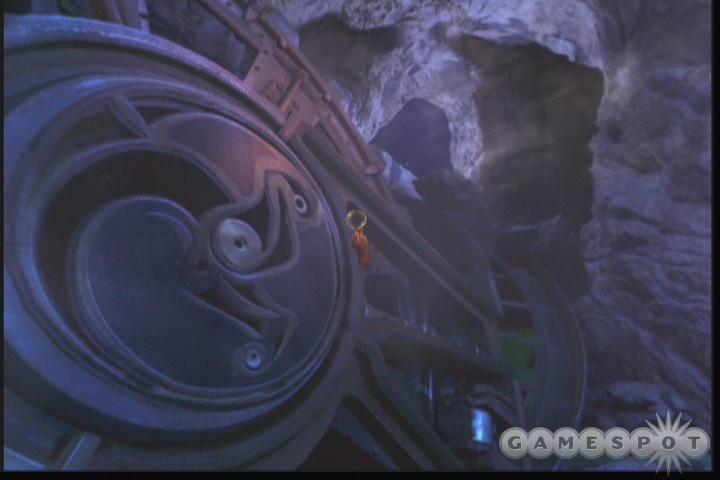
Since Myst IV involves a lot of open-ended exploration and features some multipart puzzles whose solutions are spread throughout the ages, you'll be comforted to know that the game includes a rapid transportation option to cut down on the backtracking. In short, after you visit a key area, you gain the ability to instantly teleport back to it at any time. This ability ("zip mode") isn't explained and is there just for convenience, but it's a small blessing in Myst IV. It doesn't ruin the sense of exploration, since you can't teleport to areas you've never visited, nor can you use zip mode to cross between ages. Instead, much like the camera, it's a gameplay device that's necessary to facilitate some of Myst IV's ambitious puzzles. Once you finally discover the hidden logic to one of Myst IV's complex, interweaving natural or mechanical networks, you'll want to be able to quickly manipulate these systems to see what happens rather than spend a lot of time trudging from point to point.
Soon into Myst IV, you'll find an amulet that lets you hear, and sometimes even see, recent memories of what occurred in a particular location. The amulet will glow and chime when it can be used, and using it often reveals obscure clues or more bits of story. If nothing else, the amulet helps keep the world of Myst IV from feeling too lonesome for its own good. It's true that you'll see nary a soul during most of the game, but at least you'll be able to hear what once happened at the various places you'll visit. It's an interesting narrative technique, actually. Oftentimes, you'll be able to piece together parts of the story just by making inferences. For example, on Haven, you'll encounter the carcass of some huge aquatic beast, and the amulet reveals how the beast met its end at the hands of one of Atrus' sons. This turns out to be one of several similar clues for one of the game's most complicated puzzles.
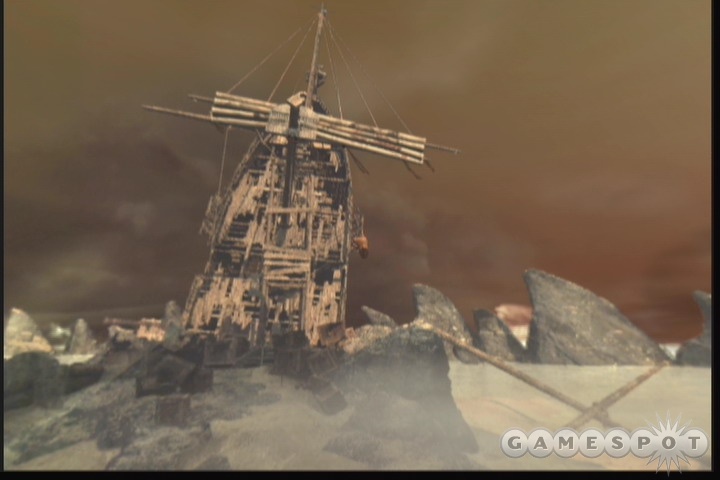
The game of chess symbolically appears at several points in Myst IV, and it was apparently a great influence on many of the puzzles here, but not in the way you might expect. As mentioned, Myst IV's puzzles are often multipart affairs that require intense scrutiny, some leaps of logic, and the ability to think ahead through multiple steps. There are many cause-and-effect relationships to be found here involving multiple important variables, which must first be identified and then connected. Be prepared to break out a pen and paper while playing, because aimlessly poking around in the game's puzzles will get you nowhere fast. So you'll need to map out exactly what you're trying to accomplish. If this all sounds rather convoluted, it is. Some of the puzzles in Myst IV are so difficult that even following exact step-by-step instructions for solving them can be something of a challenge.
Perhaps it's no surprise, then, that Myst IV includes a "help map" as part of the game. The help map is available at the touch of the D pad to give you clues for each of the game's puzzles, as well as provide complete solutions, if necessary, or if you can't resist. The help map is not a walk-through; you'll still need to figure out what to do when. But at least the help map can usually allow you to get your bearings if you're having trouble. And in the end, it can keep you from getting hopelessly stuck. That the help map's solutions are buried a few layers deep is actually a good thing, since it would threaten to ruin some of the pleasure of exploring the game "blind" if it were readily on hand at all times.
If nothing else, the help map is there to prove that, sure enough, most every puzzle in Myst IV basically makes sense...at least in hindsight of its solution. The solution is almost never obvious, but it's arguably never arbitrary, either. These are some high-quality puzzles, but they're best suited to experienced adventure game players, or for those otherwise skilled at solving logic problems. If you don't fall into one of these categories, though, the puzzles here are liable to make you feel like you're in way over your head.
Even when you're completely baffled about how to proceed, chances are you'll still be fairly impressed by Myst IV's presentation. One nice touch is that you may use the cursor to tap on practically any object in the game, resulting in a noise that confirms whether the object is made of metal, wood, stone, or what have you. This truly helps make each scene seem like more than just a panoramic picture, and a little more like a real place. Myst has always been known for its imaginative, high-quality graphics, and Myst IV carries on that tradition well, though not as well on the Xbox as on the PC, as previously mentioned. In turn, Myst has always been known for featuring some outstandingly good ambient sound, and this is also true of Myst IV. The little tapping noises are an excellent part of the experience, and so is the game's outstanding, mystifying ambient musical score, featuring chorus vocals in many cases. The different ages you'll explore manage to sound every bit as distinctive as they look.
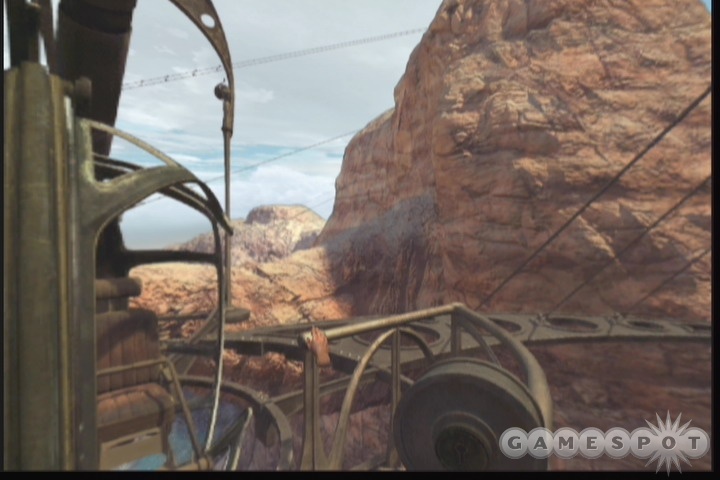
Myst IV packs in a lengthy, memorable journey that's liable to last for days, if not weeks, before it finally reaches a climactic moment that's quite a payoff for all your effort. And it truly does feel like the end of a journey when it happens. Myst has always been an experience as much as a game. Though the series has spawned countless imitators in the adventure genre, it has continued to stand tall among them thanks to its highly cohesive design and relentless attention to artistic quality. Interestingly, Myst IV is the first game in the series that was developed at Ubisoft Montreal, a studio that's best known for making Tom Clancy's Splinter Cell. Nevertheless, the developers at Ubisoft Montreal have produced in Myst IV a sequel that carries on the series' high standards. If you're open to a new kind of experience on your Xbox and don't have the means to play the PC version of the game, this one is worthwhile.